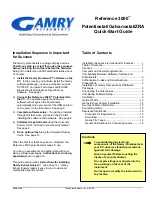
1-7
IM WT5000-01EN
What Is a Measurement Function?
Measurement Function
The physical values (such as rms voltage, average current, power, and phase difference) that this instrument
measures and displays and measurement range and other measurement information are called measurement
functions. Each measurement function is displayed using symbols that correspond to its physical value. For
example, “Urms” corresponds to the true rms voltage.
Element
Element refers to a set of input terminals that can receive a single phase of voltage and current to be measured.
This instrument can contain up to seven elements, numbered from 1 to 7. An element number is appended to
the measurement function symbol for the measured data that this instrument displays, so that you can tell which
data belongs to which element. For example, “Urms1” corresponds to the true rms voltage of element 1.
Wiring System
You can specify five wiring systems on this instrument to measure the power of various single-phase and
threephase power transmission systems: single-phase, two-wire; single-phase, three-wire; three-phase, three-
wire; three-phase, four-wire; and three-phase, three-wire with three-voltage, three-current method.
Wiring Unit
The wiring unit is a set of two or three input elements of the same wiring system that are grouped to measure
three-phase power. There can be up to three wiring units: ΣA, ΣB, and ΣC.
Σ Functions
The measurement function of a wiring unit is called a Σ function.
For example, “UrmsΣA” corresponds to the average of the voltages of the input elements that are assigned to
the wiring unit ΣA. The average value represents the true rms value.
Three-phase
three-wire
ΣA
1
Element number
Wiring system
Wiring unit
Voltage input
Current input
2
3
4
5
6
7
Three-phase
three-wire
ΣB
Three-phase
four-wire
ΣC
Measurement Period
For information about the measurement period for computing measurement functions, see “Measurement Period
(SYNC SOURCE).”
1 Items That This Instrument Can Measure
















































